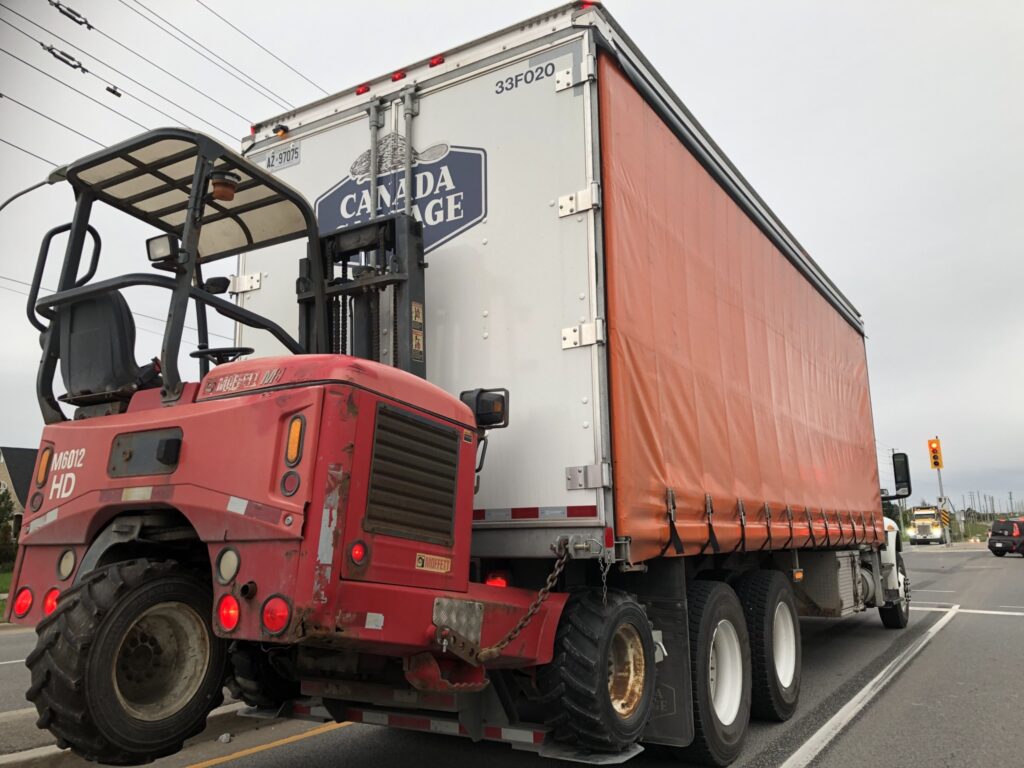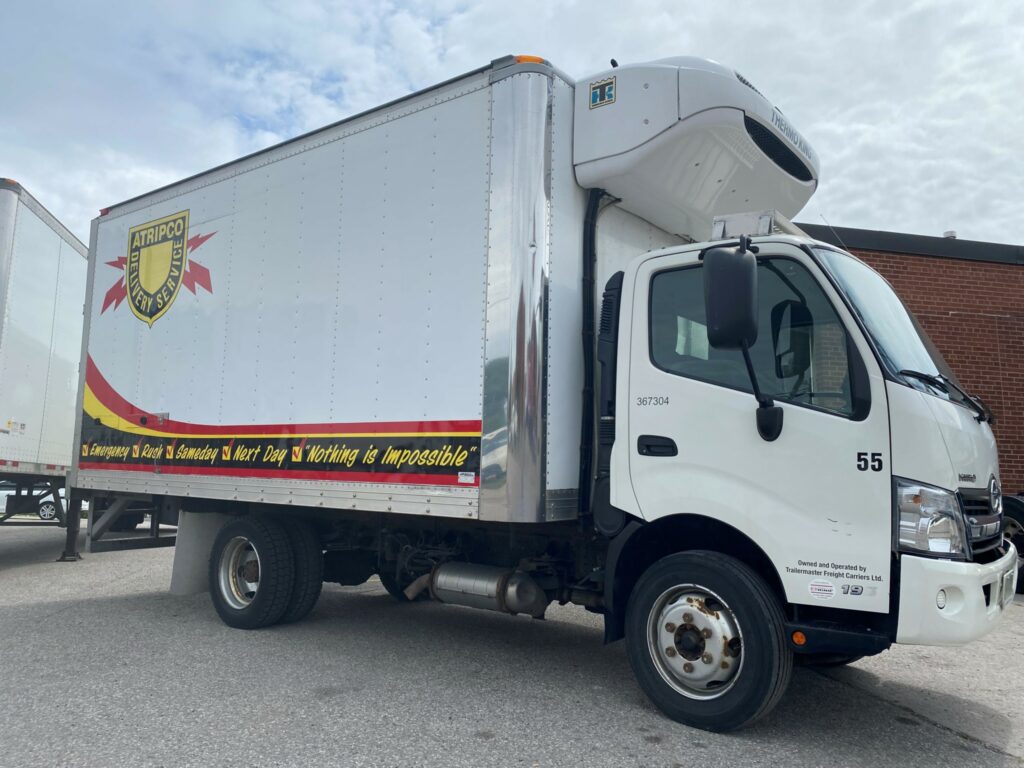White glove deliveries are the final step in the Final Mile
Final Mile deliveries represent more than their fair share of challenges, ranging from expedited timelines to routes that wind through tight residential streets. The customers who receive such freight have unique demands of their own.
Introduce some freight that doesn’t fit neatly inside a protective box, or goods that actually have to cross a home’s threshold, and you have the makings of a “white glove” delivery.

Such work is not for every fleet. “My drivers use tan work gloves,” one fleet owner quipped, as I called different operations in the search for businesses that specialize in white glove freight.
There’s a good reason for caution. The difference between profit and loss is often defined by repeatable business processes and procedures, or the steps to consolidate freight and routes. The added times and touchpoints that apply to white glove deliveries can make it particularly difficult to apply such approaches.
But there’s no denying that e-commerce activity — accelerating against the backdrop of pandemic-related restrictions for brick-and-mortar retailers – is leading to a growing volume of freight that requires white glove service. A retailer’s customized deliveries don’t always align with a courier’s defined schedules. And high-end online furniture might require some on-site assembly and cleaning before a delivery is done.
“The pandemic, in the last year and a half, has put demand through the roof,” says Lindsay Service, vice-president – sales and administration at Toronto-headquartered Atripco. That’s especially true among retailers who traditionally filled no more than an occasional order with a courier service, she says.
They want everything delivered now. And their customers expect nothing less.

Whatever a customer needs
White glove deliveries essentially involve whatever a customer needs, says Kent Werner, the former owner of Kore Logistics – a business acquired earlier this year by Canada Cartage, which has since named him director of operations for home delivery in Western Canada.
“It’s a full-service experience, and that’s the impression you’re supposed to get.”
Canada Cartage is no stranger to incorporating unique customer requirements in its role as a dedicated contract carrier. After all, dedicated contract services essentially work like the outsourced version of a private fleet. Shippers like Home Depot define many of the specific processes to be followed in deliveries.
But white glove deliveries add yet another layer of touchpoints and requirements, says Gerald Nakano, Canada Cartage’s vice-president – western region and home delivery. “This type of delivery has not been in our DNA.” But it’s the type of business the fleet wants to further integrate, applying some of the expertise acquired by purchasing Kore Logistics.
Canada Cartage was already delivering larger package-style deliveries, but realized there was a growing need for two-man deliveries, he explains. And when the products from multiple shippers are consolidated, they don’t always fit neatly into a box or on a pallet.
“We call them non-conveyables.”
Atripco’s journey into white glove deliveries was relatively organic, Service says. The fleet was established as a high-end courier, and its motto proclaims “nothing is impossible”. But there are some things that admittedly require some creative thinking. The customer that wants to send unboxed gift baskets to key locations during the holidays? That has to move. The requirements for drop-offs that are unique to each location? Everything must be accommodated.
“We handle all of the freight. There’s no conveyors,” she says.

Truck driver training
Collectively, it means some extra training for truck drivers who can be called upon to become experts in the goods being hauled as well as the delivery processes themselves.
“You talk to our guys who have done it for years, they know model numbers,” Werner says. On a fridge with an ice maker, that might mean knowing which screw has to be removed to access the hookup for a water line. “Some of our guys know more about furniture and fabrics than a junior designer,” he adds. On a custom sofa, that may mean steaming the skirt before putting it into the home, and knowing exactly where it should be touched while moving. There might be final touchups before pulling something inside, or a need to be prepared to talk about distressed wood and explain why something might look slightly different than the one in a showroom.
It places some added demand on any onboarding processes, particularly those that involve soft skills.
Most truck drivers have the ability even if they aren’t involved in such work today, Werner insists. “We live in a service culture, so most people with a little bit of coaxing and training can get there.”
The training clearly extends beyond shifting gears and driving a truck. For example, when a truck driver sees a Ferrari in the driveway of a home receiving a high-end furniture delivery, they’re supposed to control themselves and not ask the homeowner how much it’s worth.
“Somebody who was just ‘a guy’ is now the center of the operation, and you can’t put a price on that.”
– Kent Werner, Canada Cartage
“Those are actually things we talk about in training,” Werner says. “We don’t actually comment on the artwork in the entry way until [the customers] do.”
The driver becomes the face of the business behind the shipment, rather than representing the fleet alone. “That may mean even [going] to the point of using that company’s lingo or the terminology that they use,” Nakano says. “How do they refer to a delivery? … This is the script you want to use when you arrive.”
But he stresses that truck drivers who are involved in the white glove deliveries can find a special sense of satisfaction. It’s easier to understand an individual role in the supply chain when you are the person who sets the goods in their final resting place.
“Somebody who was just ‘a guy’ is now the center of the operation, and you can’t put a price on that,” Werner says. “You can have somebody who bought $250,000 worth of furniture, and our driver is the guy that is leading that. He’s the face for a quarter-million-dollar sale.”
Demanding schedules
Homeowners are also placing increasing demands on delivery schedules. And unlike other receivers in the supply chain, they likely won’t care about the difference between a bulk shipment or an envelope that arrives by FedEx.
“Amazon has set the bar with consumer expectations, with regard to how quickly they should get things,” Service says. That adds to the pressure placed on the shippers who are looking for white glove delivery services.
“A customer’s customer is the person we’re working with the most, and so our customer’s customer has exactly zero transportation knowledge [or] industry expertise and they don’t care to,” Werner explains. Supply chain experts might recognize challenges at a particular port. Someone waiting for a high-end dining table will be worried more about how they’ll look in front of guests at a dinner party.
Kore Logistics responded by tightening its delivery times just over a decade ago, Werner says. At first, it meant refining processes to identify two-hour delivery windows rather than identifying a particular day for a delivery. Today, the broader use of tracking and telematics has made it possible to notify homeowners when the truck is just five minutes away.
Atripco uses an app that delivers the same delivery updates to dispatchers and homeowners alike. “It used to be a lot of late-night data entry,” Service says, referring to how such details were conveyed in the past.
Specialization
There are lessons from dedicated contract work that apply to such shipments.
“Here in Calgary, we have 40 different customers. It’s like 40 different businesses because every customer has a unique and different level of service level requirements and delivery requirements,” Nakano explains.
Vehicles might need to be equipped with some unique tools, for example. The trucks that specialize in moving fabric furniture might carry a steamer for the skirt, and a vacuum to remove any traces of dust. With appliances there might be yet another tool kit.
But when it comes to carrying heavier goods into a home, Canada Cartage abandoned automatic stair climbers. A pair of drivers who know how to properly use carrying straps can easily maneuver a 350-pound fridge, Werner says.
There are also pandemic-related needs to considered. Covid-19 has led to an increase in white glove deliveries, but it has also introduced a few new barriers to the activity.
In the early days of the pandemic, a large share of household deliveries traveled no further than a garage or a door’s threshold. That eventually evolved into contact deliveries, sometimes with customers offering their final inspections once drivers are out of the room, and offering the final thumbs up through a living room window.
Atripco responded to the limits by allowing drivers to enter the names of those who receive the goods, rather than passing documents or tablets back and forth for signatures. Photos were introduced as one of the final steps to offer proof of delivery.
Service expects some of these delivery requirements to ease as public health restrictions are removed. But much of the work itself will remain, she says. People are now accustomed to the convenience of shipping just about anything imaginable.
New competition
There is a new layer of competition coming along for the ride as well.
The gig economy has seen an influx of inexperienced couriers that are willing to take on just about any freight and seem more than willing to undercut rates until they see the complexity involved, Service says.
“We’ve always offered emergency, same-day,” Service says. But the true white glove deliveries take things to a different level. The customer who has always paid for next-day service may balk at the fees associated with immediate deliveries, so some education is needed. “We can guarantee you a delivery time, but there’s a cost to that service.”
In the meantime, there is the ongoing search to find the common procedures that will apply to the varied freight, looking for ways to control the margins. Says Service: “We’re trying to develop processes, but we have so many exceptions.”
Have your say
This is a moderated forum. Comments will no longer be published unless they are accompanied by a first and last name and a verifiable email address. (Today's Trucking will not publish or share the email address.) Profane language and content deemed to be libelous, racist, or threatening in nature will not be published under any circumstances.